 |
King of Chemicals Manufacturers |
Specifications, Properties, Uses, SDS of Folic Acid or Vitamin B9 USP BP Ph Eur FCC Food Grade Manufacturer Supplier Exporter Wholesale & Small Packs, CAS Number yyy. |
|
| King of Chemicals has several associated companies having accreditations like cGMP, GLP - FDA Approved Good Manufacturing Practice and Good Laboratory Practice of WHO standard, ISO-9001, ISO-14001, ISO/IEC 17025, ISO ISO-45000, HACCP, FSSC 220000, FSSAI, "REACH" Registered, Kosher & Halal Certified. e-CTD and DMF support can be made available if needed. We offer USP NF BP Ph Eur EP IP JP Analytical Reagent FCC Food Grade Chemicals & Nutraceuticals. | |
        |
|
Muby Chem Pvt. Ltd. is a several decades old group of companies, engaged in manufacturing, supplying, distributing, wholesale supplies of Folic Acid or Vitamin B9 USP BP Ph Eur FCC Food Grade for actual users, including retail or small pack supplies for research and development work.
We supply fine and speciality chemicals, pharmaceutical excipients, mineral fortifiers in chemically pure, analytical reagent grade, IP BP USP Ph Eur EP JP and other pharmaceutical grade monograph including FCC Food grade chemicals and Nutraceuticals at best prices. We and/or our associated units have all the facilities to supply as per cGMP standard observing good manufacturing practice and good laboratory practice. We can assure low microbial count and also offer a test certificate for the same. We maintain warehouses across USA, India, and UAE. Our group exports to USA, Canada, Mexico, Argentina, Brazil, Chile, Korea, Malaysia, Thailand, Indonesia, Europe, and several other parts of the world. We supply in wholesale container loads to small pack of few grams. Solid products may be specified for it size and shape as desired by the buyer.


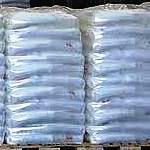

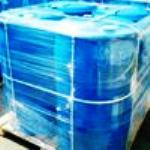
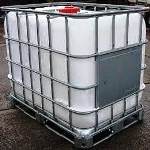
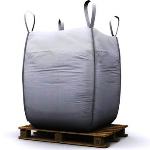
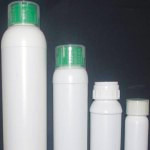

Folic Acid or Vitamin B9 CAS Number
For Properties Specifications Uses of Folic Acid or Vitamin B9 Click Properties, Specifications, Uses, Price, Process of Folic Acid or Vitamin B9 Manufacturer.
For For SDS MSDS Sheet of Folic Acid or Vitamin B9 Click SDS Safety Data Sheet MSDS Sheet of Folic Acid or Vitamin B9 Manufacturer.
The Properties, Specifications, Monograph and Uses of Folic Acid or Vitamin B9:
Folic Acid USP Grade Specifications:
C19H19N7O6 --- 441.40
l-Glutamic acid, N-[4-[[(2-amino-1,4-dihydro-4-oxo-6-pteridinyl)methyl]amino]benzoyl]-;
N-[p-[[(2-Amino-4-hydroxy-6-pteridinyl)methyl]amino]benzoyl]-l-glutamic acid CAS 59-30-3
DEFINITION
Folic Acid contains NLT 97.0% and NMT 102.0% of folic acid (C19H19N7O6), calculated on the anhydrous basis.
IDENTIFICATION
A. Ultraviolet Absorption:
Sample solution: 10 µg/mL in 0.1 N sodium hydroxide solution.
Acceptance criteria: Meets the requirements. The ratio A 256 / A 365 is 2.80–3.00.
Related Compounds: To pass the test.
Water Determination: NMT 8.5%
Folic Acid BP Ph Eur Specifications:
C19H19N7O6 --- 441.4 CAS 59-30-3
Action and use: Vitamin B component.
DEFINITION
(2S)-2-[[4-[[(2-Amino-4-oxo-1,4-dihydropteridin-6-yl)methyl]amino]benzoyl]amino]pentanedioic acid.
Content: 96.0 per cent to 102.0 per cent (anhydrous substance).
CHARACTERS
Appearance: Yellowish or orange, crystalline powder.
Solubility: Practically insoluble in water and in most organic solvents. It dissolves in dilute acids and in alkaline solutions.
IDENTIFICATION
First identification: A, B
Second identification: A, C
A. Specific optical rotation: + 18 to + 22 (anhydrous substance).
Dissolve 0.25 g in 0.1 M sodium hydroxide and dilute to 25.0 mL with the same solvent.
B. Examine the chromatograms obtained in the assay.
C. Thin-layer chromatography.
Related substances: To pass the test by liquid chromatography.
Water: 5.0 per cent to 8.5 per cent, determined on 0.150 g.
Sulfated ash: Maximum 0.2 per cent, determined on 1.0 g.
Folic Acid FCC Food Grade:
N- [4- [[(2-Amino-1,4-dihydro-4-oxo-6- pteridinyl) methyl]amino]benzoyl]-L-glutamic Acid;N-[p-[[(2-Amino-4-hydroxy-6-pteridinyl)methyl]amino]benzoyl]glutamic Acid; Pteroylglutamic Acid.
C19H19N7O6 --- Formula wt 441.40 --- CAS: [59-30-3]
DESCRIPTION
Folic Acid occurs as yellow or yellow-orange crystals or crystalline powder. About 1.6 mg dissolves in 1 mL of water. It is insoluble in acetone, in alcohol, in chloroform, and in ether, but dissolves in solutions of alkali hydroxides and carbonates. The pH of a suspension of 1 g in 10 mL of water is between 4.0 and 4.8.
Function: Nutrient.
REQUIREMENTS
Identification: The ultraviolet absorption spectrum of a 1:100,000 aqueous solution in 1:250 sodium hydroxide solution exhibits maxima and minima at the same wavelengths as those of a similar solution of USP Folic Acid Reference Standard, concomitantly measured. The ratio A256/A365 is between 2.80 and 3.00.
Assay: Not less than 95.0% and not more than 102.0% of C19H19N7O6, calculated on the anhydrous basis.
Lead: Not more than 2 mg/kg.
Residue on Ignition: Not more than 0.3%.
Water: Not more than 8.5%.
The MSDS-SDS Hazard Statement of Folic Acid or Vitamin B9:
Folic Acid SDS, Safety Data Sheet
MSDS Sheet, Material Safety Data Sheet 12-April-25
1. Product Identification
Product Name & Other Names: Folic Acid or Folate.
CAS No.: 59-30-3
EINECS EC Number: 200-419-0
Relevant uses and uses advised against (if any): Industrial Manufacturing.
2. Hazards Identification
GHS, Globally Harmonized System Classification in accordance with 29 CFR 1910
Classification according to Regulation (EC) No 1272/2008
Not a hazardous substance or mixture according to Regulation (EC) No. 1272/2008.
This substance is not classified as dangerous according to Directive 67/548/EEC.
Labeling according to GHS & Regulation (EC) No 1272/2008
GHS Label Elements NONE |
Signal Word: None
Precautionary statements:
P261: Avoid breathing dust/fume/gas/mist/vapors/spray.
P262: Do not get in eyes, on skin, or on clothing.
P281: Use personal protective equipment as required.
P302+P352: IF ON SKIN: Wash with plenty of soap and water.
P304+P340: IF INHALED: Remove victim to fresh air and keep at rest in a position comfortable for breathing.
P305+P351+P338: IF IN EYES: Rinse cautiously with water for several minutes. Remove contact lenses, if present and easy to do. Continue rinsing.
P337+313: If eye irritation persists get medical advice/attention.
3. Composition/Information on Ingredients
Product/Synonyms: Folic Acid or Folate.
CAS No.: 59-30-3
EINECS EC Number: 200-419-0
4. First Aid Measures
Always get medical attention after the first aid is over.
Inhalation: Remove to fresh air. If not breathing, give artificial respiration. If breathing is difficult, give oxygen. Get medical attention.
Ingestion: Induce vomiting immediately as directed by medical personnel. Never give anything by mouth to an unconscious person. Get medical attention.
Skin Contact: Wash affected areas with soap and water for at least 15 minutes while removing contaminated clothing and shoes. Get medical attention if symptoms occur.
Eye Contact: Immediately flush eyes with plenty of water for at least 15 minutes, lifting lower and upper eyelids occasionally. Get medical attention immediately.
5. Fire Fighting Measures
Fire: Not considered to be a fire hazard.
Explosion: Reactions with incompatibles and fine dust on heating may pose an explosion hazard.
Fire Extinguishing Media: Use water spray, alcohol-resistant foam, dry chemical, or carbon dioxide. Use means suitable for extinguishing surrounding fire. Avoid solid water jet as it can scatter the fire.
Special Information: In the event of a fire, wear full protective clothing and NIOSH-approved self-contained breathing apparatus with full face piece operated in the pressure demand or other positive pressure mode. Can form products including ammonia, oxides of nitrogen, carbon oxide and toxic fumes on burning.
6. Accidental Release Measures
Personal precautions, protective equipment, and emergency procedures: Avoid breathing dust/fumes/gas/mist/vapors/spray. Use individual protective equipment (waterproof boots, suitable protective clothing, safety glasses, etc.).
Environmental precautions: Do not let the product enter drains, soil, or water sources.
Methods and materials used for containment Cleanup procedures and Storage: Do not inhale dust, vapors, mist, or gas. Avoid dust formation. Contain spilled material. Cover with an inert, non-combustible absorbent material, (e.g. sand, earth, diatomaceous earth, vermiculite). Use a shovel to put the material into a convenient waste disposal container.
7. Handling and Storage
Precautions for safe handling: Apply according to good manufacturing and industrial hygiene practices. Ensure proper ventilation. In case of insufficient ventilation, wear suitable respiratory equipment. Wash thoroughly after handling. Do not drink, eat, or smoke while handling. Avoid contact with skin, eyes, and clothing. Minimize dust generation. Avoid breathing dust/fumes/gas/mist/vapors/spray. Keep container tightly closed. Avoid ingestion and inhalation. Use individual protective equipment (waterproof boots, suitable protective clothing, safety glasses, etc.).
Conditions for safe storage, including any incompatibilities: Store in cool, dry, and ventilated area away from heat sources and protected from sunlight in tightly closed original container. Keep air contact to a minimum. Store protected from heat, sparks and ignition sources and incompatible materials. Avoid inhalation of dust/mist/vapor. Do not store with incompatible materials like strong oxidizing agents and bases.
8. Exposure Controls/Personal Protection
Airborne Exposure Limits: Not established.
Ventilation System: A system of local and/or general exhaust is recommended to keep employee exposures low.
Personal Respirators (NIOSH Approved):
If the exposure limit is high and engineering controls are not feasible, a half face piece particulate respirator (NIOSH type N95 or better filters) may be worn for up to ten times the exposure limit or the maximum use concentration specified by the appropriate regulatory agency or respirator supplier, whichever is lowest.
Skin Protection: Wear protective gloves and clean body-covering clothing.
Eye Protection:: Use chemical safety goggles and/or full face shield where dusting or splashing of solutions is possible. Maintain eye wash fountain and quick-drench facilities in work area.
Other Control Measures: Maintain good housekeeping in work area. Handle in accordance with good industrial hygiene and safety practice.
9. Physical and Chemical Properties
Appearance: Faint yellow-orange to dark yellow-orange powder.
Odor: Odorless.
Odor threshold: Not applicable.
pH: 4 to 5.
Relative density: about 1.6
Melting Point: 250C.
Initial boiling point and boiling range: No data found.
Flash point: No data found.
Auto-ignition temperature: No data found.
Decomposition temperature: No data found.
Upper/lower flammability or explosive limits: No data found.
Vapor pressure: No data found.
Vapor density: No data found.
Evaporation rate: No data found.
Flammability (solid, gas): No data found.
Partition coefficient: n-octanol/water: No data found.
Solubility: No data found.
Viscosity: No data found.
10. Stability and Reactivity
Stability: Stable under ordinary conditions of use and storage.
Hazardous Decomposition Products: Decomposes upon heating and can form products including ammonia, oxides of nitrogen, carbon oxide and toxic fumes.
Hazardous Polymerization: Will not occur.
Incompatibilities: Strong oxidizing agents and bases.
11. Toxicological Information
Oral rat LD50: Not available. Oral LD50 (mouse): 10 gm/kg. Intraperitoneal LD50 (mouse): 85 mg/kg. Subcutaneous LDLO (mouse): 200 mg/kg.
Carcinogenicity: Not listed by IARC, ACGIH, OSHA and NTP.
Reproductive toxicity: No data found.
Germ cell mutagenicity: No data found.
12. Ecological Information
Toxicity to fish: No data found.
Environmental Fate: No data found.
Results of PBT and vPvB assessment: Soluble in water Persistence is unlikely based on information available.
Mobility: Will likely be mobile in the environment due to its water solubility.
13. Disposal Considerations
Not considered a hazardous waste under Federal Hazardous Waste Regulations 40 CFR 261. Follow standard disposal procedures. Follow all the pollution control laws.
14. Transport Information
DOT USA & ADT/RID Europe: Not controlled.
IMDG: Not controlled.
IATA: Not controlled.
15. Regulatory Information
USA Regulations:
SARA 311/312: No SARA hazards.
California Proposition 65: Not listed to cause cancer or birth defects or reproductive harm.
Disclaimer:
**************************
Our company provides this MSDS sheet in good faith but makes no representation as to its comprehensiveness or accuracy. This SDS sheet is intended only as a guide to the appropriate precautionary handling of the material by a properly trained person using this product. The above information has been compiled from various sources and has the possibility of discrepancy and being out-dated information. Individuals receiving the information must exercise their independent judgment and do further search in determining its appropriateness for a particular purpose. In no case shall our company be liable to loss or damages by the product user.
**************************

Folic Acid or Vitamin B9 Manufacturers, Suppliers, Exporters, Wholesalers:
King of Chemicals manufacturers

Plot No. 2900/46&47 + 2900/163to167, GIDC, Ankleshwar, Dist. Bharuch, India
India, USA, UAE
TEL: (Office) 91-22-23774610, 91-22-23723564
e-mail: info@kingofchemicals.com
Copyright and Usual Disclaimer is Applicable --- April 12, 2025
If I give you “My Word” Nobody can undo it.
If I sign an “Agreement” my Lawyer will undo it
Our products are for industrial and laboratory use only. The user must test the material before use. We are not dispensing chemists or druggist and do not offer over the counter type (OTC) products for medical use by individuals.
We and our associates manufacture pure chemicals surpassing Monograph Specifications of Analytical Reagent Standards, British & European Pharmacopoeia BP Ph Eur EP Standard, US Pharmacopoeia USP NF Standard, Indian Pharmacopoeia IP Standard, Japan Pharmacopoeia JP Standard, FCC Food Grade Standard. |
|
All-Rac-Aplha-Tocopherol or DL alpha-Tocopherol or Vitamin E |
|